Robert Ernest Tilburn
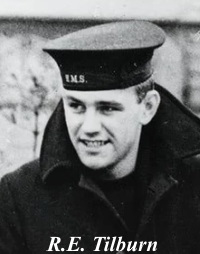
Place of birth: Leeds, Yorkshire, England
Service: Royal Navy
Rank: Able Seaman
Service Number: P/JX 153249
Joined Hood: 1938
Left Hood: (Survived the sinking)
Biographical Information:
Robert Ernest Tilburn was born in Leeds on 3rd February 1921. He was the son of a police officer. The family lived at Foxwood Walk, Leeds. When aged 10, Bob and his family took a holiday at Portsmouth. During that visit, they attended Navy Days. It is from this day out that Bob dated his ambition to join the Royal Navy.
Following his initial training on joining the Royal Navy, Bob was drafted to the Iron Duke, Jellicoe's flagship at Jutland, which was serving out the final few years of her life in the role of a boys' training ship. After a few months in Iron Duke Bob was drafted to Hood, which he joined at Gibraltar in 1938.
Early months of service in Hood were dominated by the events of the Spanish Civil War. Later, following the outbreak of World War 2 in September 1939, Hood returned to home waters and was based at Scapa Flow. In June 1940 Hood sailed back to the Mediterranean to take part in the action against the French fleet at Oran.
During his first months in Hood, Bob had worked in the shell room which served "A" turret, but later he moved above decks and worked on the 4" anti-aircraft guns. His new job above decks fostered a love of the sea and seabirds that were Hood's constant companions.
When Hood and Prince of Wales intercepted the German warships Bismarck and Prinz Eugen on the morning of 24 May 1941, Bob was at his station on one of the 4" guns on the port (disengaged) side of the ship. Many years later he recalled, "Everyone was prepared as far as they could be. Everyone knew that there would be casualties - but it would be someone else, not you. No one thought that the Hood would be sunk - no one gave it a thought, but there would be casualties, which were to be expected." Once the action had started Bob remembers seeing flashes as Bismarck fired her salvoes. Hood was hit by what he thought to be Bismarck's 4th, 5th and 6th salvoes. He also recalled a shell hitting the forward shelter deck (presumably at the base of the bridge) shortly after men had been told to take cover there. He believed around 200 men were killed as a result. By this time fire had taken hold on the open deck in the middle part of the ship and ammunition was exploding.
Together with two others from the gun crew, Bob was sheltering on the port forward side of the Shelter Deck when Hood was hit again. This hit killed his two mates and Bob himself was only saved by the gun (UP mount) splinter shield. Seeing his two mates killed, Bob felt ill and went over to the side of the ship to be sick. He looked back and saw Hood's bows rearing up. As it was obvious the ship was going under, Bob started to strip off excess clothing that would make keeping afloat difficult. Suddenly he found himself in the water. Soon after entering the water he was struck on the back of his leg by the mast as the forward half of Hood fell over. Worse was to follow as an aerial snagged one of his sea boots and pulled him down below the surface. Luckily, Bob still had his wits about him and was able to cut off the tangled boot with his knife. On freeing himself he shot back up to the surface.
Once he was on the surface Bob could see that there was a lot of debris around including some "biscuit floats" which would help him stay afloat. Unfortunately the floats were in some oil fuel which Bob was wary of swimming into. However, after about an hour in the water, he was getting tired and decided to swim carefully over and get hold of a biscuit raft to help him stay afloat. Having successfully recovered one, he paddled across to where the other two survivors - William Dundas and Ted Briggs were situated.
As time went on Bob, as well as Ted Briggs started to succumb to the cold temperatures. Bob felt himself slipping away and eventually tried to go to sleep, which he had heard would lead to a peaceful death. Fortunately, both he and Ted were rousted by William Dundas. Dundas kept them alert by singing popular songs and getting the others to join-in. At one point an aircraft flew over but they were not spotted. Eventually, it was Dundas who spotted Electra heading to their rescue. "A marvellous sight," Bob later recalled.
Once aboard Electra Bob remembers being cleaned up and given tea with rum to warm him up and get his blood flowing again. Electra took them to Reykjavik where the Captain offered the three the choice of landing and a transfer to hospital or staying aboard as the ship joined the hunt for the Bismarck. There were no volunteers to stay aboard!
Five days were spent in hospital in Iceland before Bob and the other two were sent to Greenock by sea. They were given strict instructions not to discuss the sinking with one another, though whilst he was in hospital Bob did manage to get a message sent to his parents via a Lieutenant in the West Yorkshire Regiment to say that he had survived and was okay.
Following the train journey to London the survivors were taken to the Admiralty where they were given an initial debrief by Vice Admiral Whitworth who himself had left Hood only recently. Bob was then given leave until the Board of Enquiry was formed to investigate Hood's loss. He is known to have visited home as well as his friend Bill Lee in Blackpool during this timeframe.
By an amazing omission that we have never seen any attempt to explain, neither Bob nor Ted Briggs were called to give evidence to the first Board under the Presidency of Admiral Geoffrey Blake. It was not until the second Board was called that Bob again met Ted Briggs - in the waiting room before going in to give his evidence.
Following his attendance at the Board of Enquiry, Bob was drafted to Victory at Portsmouth where he served until 1943. After this, Bob returned to a big ship with a draft to H.M.S. Queen Elizabeth in which he saw service in the Far East. Bob remained out east for a further draft from June 1946 to December 1947 during which time he worked in Air Sea Rescue boats.
January of 1948 saw a return to Victory until September of that year when he was drafted to H.M.S. Rifleman, a minesweeper operating in the Mediterranean. After 6 months in Rifleman it was back to the big ships with a draft to H.M.S. Howe in the Home Fleet. Bob remained in Howe until December 1949. Following this there was a return to Victory for a year then a further sea draft to H.M.S. Warrior which was used to carry supplies to the Far East in support of the Korean War. Bob left the Royal Navy on 31st August 1952.
Bob had 3 children and worked for M.O.D. in Eaglescliffe and later the inland revenue until his retirement. His hobbies were reading mainly detective books, and wine making at which he was very good. He also gardened out of necessity. He was a quiet gentleman who enjoyed holidays abroad in the sun, although one of his favourite places was Whitby on the north east coast, where he retained a love of the sea.
After joining the H.M.S. Hood Association in the mid 1970s, Bob became its second President. He held the post until he passed away on 24th February 1995. Bob is much missed and is fondly remembered by his fellow shipmates.
Additional Photos |
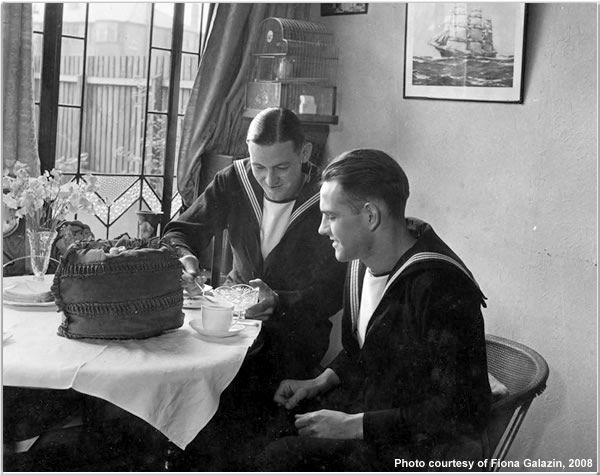 Bob (right) and his friend Bill Lee (courtesy Fiona Galazin) |
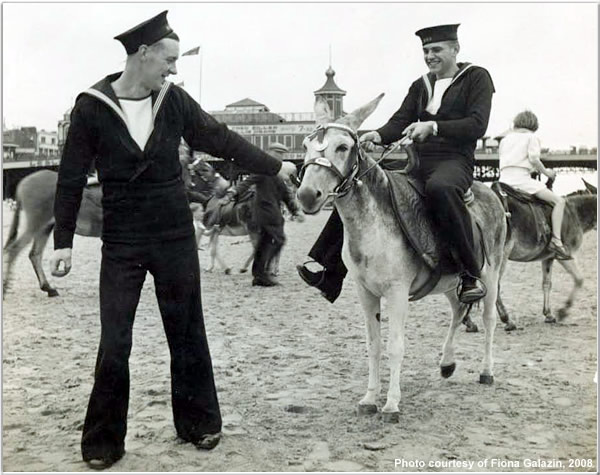 Bob was visiting Bill and his family during the summer of 1941very shortly after the sinking of Hood (courtesy Fiona Galazin) |
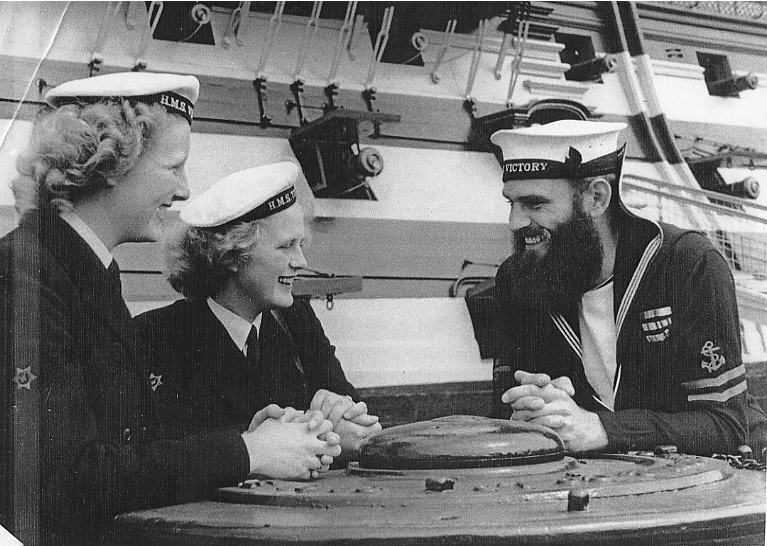 Bob, during a period as an Acting Leading Seaman, and some lady friends outside H.M.S. Victory sometime between the sinking of Hood and 1943.(Courtesy Bob's family.) |
 Bob, during a period as an Acting Leading Seaman, and some lady friends outside H.M.S. Victory sometime between the sinking of Hood and 1943.(Courtesy Bob's family.) |
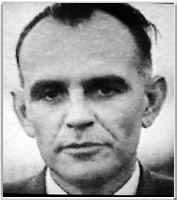 Bob post war. |
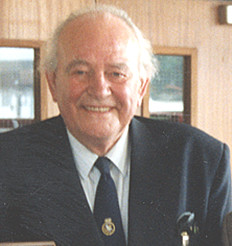 Bob during his time as President of the Association. |
No known memorials
Sources
Commonwealth War Graves Commission
'Register of Deaths of Naval Ratings' (data extracted by Director of Naval Personnel (Disclosure Cell), Navy Command HQ, 2009)
